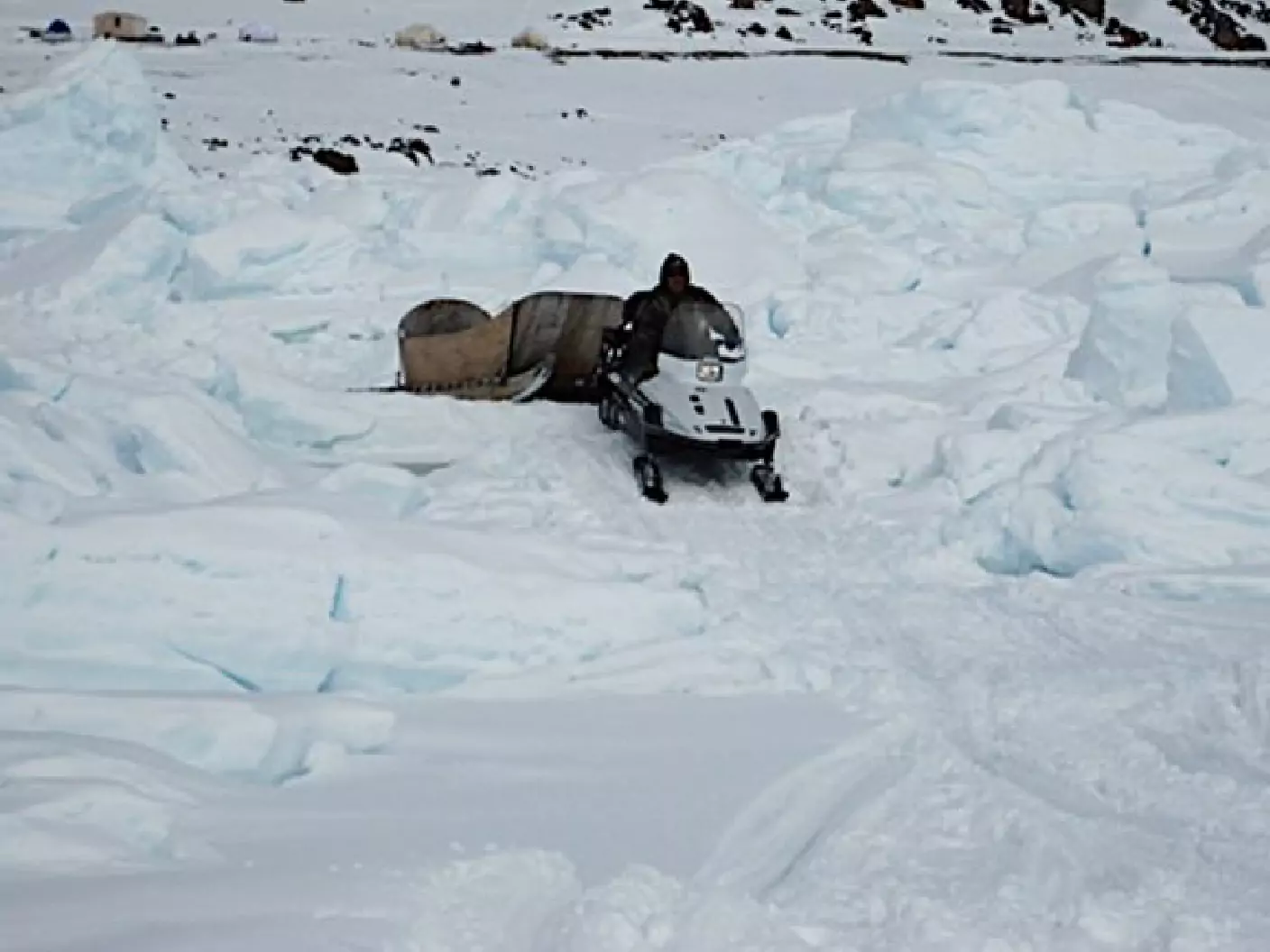
Sikutuqaq - Old Ice
Indigenous Knowledge
Sikutuqaq ᓯᑯᑐᖃᖅ
'ᑕᕆᐅ ᓯᑯ ᐱᑐᖃᐅᓪᓗᓂ. Tariu siku pituqaulluni. Ice that formed the previous year and did not melt. Multi-year ice, old ice.' (Mittimtalik, North Qikiqtaaluk, Sikumiut Committee, Wilson and Arreak 2022: 105)
Tuvatuqaq ᑐᕙᑐᖃᖅ / Aksuilik ᐊᒃᓱᐃᓕᒃ
'ᑕᒪᓐᓇ ᓯᑯ ᓯᑯᑐᖃᐅᓕᖅᑎᓪᓗᒍ ᓈᙳᐊᖃᓕᕐᓗᓂᓗ, ᐊᐳᑎᓪᓚᕆᐅᓕᕐᓗᓂᓗ ᓄᓇᒧᓪᓗ ᓯᑯᓯᒪᑦᓯᐊᓕᕐᓗᓂ.
Tamanna siku sikutuqauliqtillugu naannguaqalirlunilu, aputillariulirlunilu nunamullu sikusimatsialirluni.
Old, mid-winter landfast ice, after snow has accumulated on thick ice (tuvaq), the snow drifts are hard; the oldest sea ice because it formed first.' (Kinngait, South Qikiqtaaluk, Kinngait Sea Ice Glossary 2023: 35)
Qavvaq ᖃᕝᕙᖅ
'ᐊᖏᔫᑏᑦ ᓯᑯᐃᑦ ᐅᖓᓯᑐᒦᖔᓰᓴᑦ ᓯᑯᑐᖃᐅᓂᖅᓴᐃᑦ ᐅᒥᐊᖅᑐᕕᑦᓴᐅᖏᑦᑐᖅ.
large pans of moving ice that comes from far away in the summer (but not necessarily every year), usually from the north, old ice (considered like multi-year ice); when they congregate close to the sinaa the prevent boat travel; very white/clean. large but not icebergs (3rd year ice or more) (doesn’t happen every year). WMO term: multi-year ice' (Kinngait, Panniqtuq and Iglulik, North/South Qikiqtaaluk, Inuit Siku Atlas)
Related term
Kagvaq ᑲᒡᕙᖅ
'ᓯᑯᑐᖃᐃ ᑲᑎᒑᖓᑎ, ᓯᔾᔭᒻᒥ ᐅᕝᕙᓗᓐᓂ ᓯᓈᓂᒍᓐᓇᖅᑐ ᓯᔾᔭᐸᓯᒻᒥᒃ.
Sikutuqai katigaangati, sijjammi uvvalunni sinaanigunnaqtu sijjapasimmik.
When old ice multi-year ice (sikutuqaq [...]) piles up and becomes stuck together along shore. Grounds the ice like kikiak (#34).' (Mittimatalik, Sikumiut Committee, Wilson and Arreak 2022: 107)
Western Knowledge
Old Ice 'Sea ice which has survived at least one summer's melt. Topographic features generally are smoother than first-year ice. It may be subdivided into second-year ice and multi-year ice.'
Second-Year Ice 'Old ice which has survived only one summer's melt. Thicker than first-year ice, it stands higher out of the water. In contrast to multi-year ice, summer melting produces a regular pattern of numerous small puddles. Bare patches and puddles are usually greenish-blue.'
Multi-Year Ice 'Old ice which has survived at least two summer's melt. Hummocks are smoother than on second-year ice and the ice is almost salt-free. Where bare, this ice is usually blue in colour. The melt pattern consists of large interconnecting, irregular puddles and a well-developed drainage system.'
Source for English terms: MANICE
Profile photo credit: Gita Ljubicic
.svg)